Used for both industrial and more artistic applications, laser cutting is a method of cutting and etching both metals and non-metals with a focused laser beam, which either melts, burns or vaporises material away to leave a high-quality edge. But what are the advantages of laser cutting compared to other types of cutting method?
Advantages of Laser Cutting vs Traditional Methods
There are a variety of methods that can be applied to sheet metal cutting and profiling. Laser cutting is favoured for its relative accuracy, speed and cost-effectiveness, among other benefits. Let’s have a look at the different options, their advantages and disadvantages, and how they compare to laser cutting overall.
Waterjet cutting:
- Method: A jet of pressurised water is fired at the material to cut. Abrasive grain can be added to the water to cut through thicker materials at closer tolerances.
- Materials: Composites, plastics, metals, glass, stone/rock, ceramics and rubber, up to 200 mm thick.
- Advantages: Cold, so no risk of operator burns or material distortion; no hazardous waste.
- Disadvantages: Machinery is costly to run, slow, and not very accurate for smaller parts.
- Conclusion: Laser cutting is more precise, quicker and less costly than waterjet cutting. Choose waterjet for different material types and thicknesses.
Plasma cutting:
- Method: Electrically conductive gas transfers energy through the plasma cutting torch to the metal being cut.
- Materials: Metals.
- Advantages: Able to cut through thicker sheets of metal, and those with a reflective surface.
- Disadvantages: Tolerances, energy consumption and required protection are considerably greater than laser cutting.
- Conclusion: Laser cutting is the superior choice for thinner materials and more intricate work. Choose plasma cutting when working on thicker metal sheets.
Flame cutting/Oxyfuel gas cutting:
- Method: Metals are cut through the chemical reaction of oxygen with the base metal at high temperatures maintained by a flame.
- Materials: Carbon and low alloy variants of steel.
- Advantages: Able to cut thick metal; portable, no power supply necessary.
- Disadvantages: Slow; heat can distort the metal being cut.
- Conclusion: Laser cutting is more precise, faster and can be applied to a wider range of metals. Choose flame cutting for field work where there is no power source available.
Mechanical cutting
- Method: Mechanical cutting encompasses various tooling and machining techniques, utilising equipment such as lathes, milling machines, drills and saws.
- Materials: Metals.
- Advantages: Machinery is cheaper to run and often portable.
- Disadvantages: Labour costs can be higher and precision lower.
- Conclusion: Laser cutting is far superior in terms of precision and tolerances. Use mechanical cutting as a complement to laser cutting.

Types of Laser Cutting
There is also variation within laser cutting itself, with three main options each having their own advantages.
CO2 laser cutters
- Method: Cutting is done using electrically-stimulated CO₂. The CO₂ laser beam – produced in a mixture that consists of other gases like nitrogen and helium – is focussed on the surface of the material to melt.
- Materials: Glass, certain plastics, certain foams, acrylic, leather, paper-based products and wood.
- Advantages: Fast, efficient, precise, with a small heat affected zone.
- Disadvantages: High energy consumption and operating costs.
- Conclusion: Great choice for working on non-metals.
Crystal laser cutters
- Method: Crystal laser cutters produce laser beams from nd:YVO (neodymium-doped yttrium ortho-vanadate) and nd:YAG (neodymium-doped yttrium aluminum garnet).
- Materials: Plastics, metals, and some ceramics.
- Advantages: Can cut through thicker materials using smaller, higher intensity wavelengths.
- Disadvantages: High power use and shorter lifespan of components.
- Conclusion: Choose for thicker, stronger materials.
Fibre laser cutters
- Method: Fibre cutters belong to a family called ‘solid-state lasers’. A laser beam is produced by an active fibre and transferred over a transport fibre to the machine cutting head.
- Materials: Plastics and metals.
- Advantages: Smaller than CO2 lasers, producing more power for the same amount of current; therefore, more efficient and cost-effective. Can also process reflective materials, which other laser types cannot.
- Disadvantages: Not ideal for thicker materials.
- Conclusion: Primarily suited for processing sheet metal of mild and stainless steel, aluminum and other non-ferrous metals like copper and brass.
Laser Cutting from SSC Laser
So which type of cutting method do you need? The decision will ultimately rest on what type of material is being processed and your budget. SSC Laser specialises in precision laser solutions for metals including mild steel, stainless steel, aluminium, brass and copper. If you would like to learn more about the services we offer or need advice on your project, please check out our website or give us a call today.
Did you know? Laser safety is measured by class; Class 1 to Class 4. Class 4 is identified as the most dangerous, including the lasers we utilise at SSC Laser.




